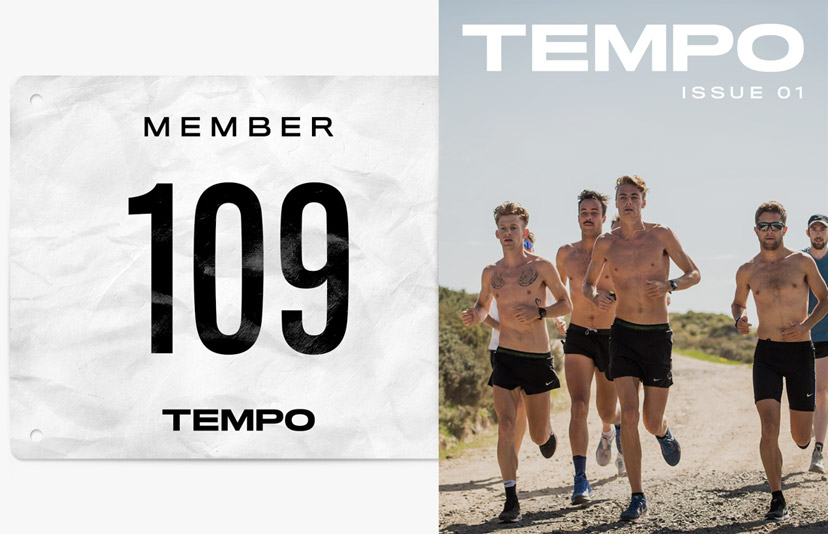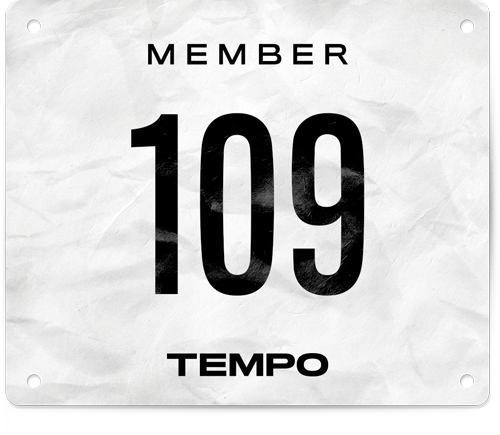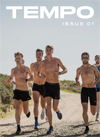Performance
The last runner in Los Angeles
Scott Smith is overcoming the statistics to chase his marathon goals
There’s that classic mantra that all professional distance runners have repeated to themselves since the dawn of training groups in exotic locales such as Boulder, Flagstaff and even Boston.
It goes, “location, location, location.”
When I meet up with Scott Smith it’s an uncharacteristically clear Saturday morning, and Los Angeles has just seen its first break in what the California Air Resource Board called “the longest stretch of bad air in decades.” The ozone levels in Southern California exceeded the “safe level” of 70 parts per billion for 87 straight days. But we didn’t talk about that as we jammed a bike into the trunk of his fiance’s sedan and head towards Ballona Creek.
It's Scott’s last day in Los Angeles before packing up and heading to Flagstaff. There, he’ll spend the next six weeks finishing his build-up for the New York City Marathon in November. On the docket this morning is at least 20 miles of work.
“We’ll start out with ten miles, and then move into a 54-minute fartlek,” he says. I ask him what the breakdown is and, unlike most runners I know, he responds, nonplussed, that he didn’t actually know and would have to check once we parked.
Ballona Creek itself is a bit of a misnomer. A better word for it might be the Ballona Ditch, as any semblance of nature was paved over with concrete in the name of flood control back in 1938. In 2018, however, it presents probably the most accessible stretch of protected bike lanes in Los Angeles, spanning for nearly 7-miles between National Boulevard in Culver City all the way down to the ocean. This is how you find 20-miles worth of running in Los Angeles.
The bike path at 8 am on a Saturday is crowded. This isn’t surprising when you consider that the streets of Los Angeles are some of the most dangerous for pedestrians in the country. In 2016, Los Angeles County ranked first in pedestrian fatalities, with nearly twice as many deaths as second place--a trend that continued in 2017. It could be crowded out of sheer popularity. But it could also be out of necessity.
Data be damned, the only thing you have to do to understand the open space squeeze in Los Angeles is fly into LAX and peek through the window. I’m talking concrete, baby. Acres and acres of beautiful, rock solid concrete.
“It’s almost more of a grind for me in Los Angeles than it is in Flagstaff,” Scott says. “Even though I may physically be more tired in Flagstaff, when I’m here it just takes a little more gumption to get out the door. But I'm pretty low maintenance as far as going for runs is concerned, so I don’t mind training in Los Angeles too much.”
Los Angeles has just seen its first break in what the California Air Resource Board called “the longest stretch of bad air in decades.”
The ozone levels in Southern California exceeded the “safe level” of 70 parts per billion for 87 straight days.
Ryan Sterner
Though he’s leaving the next day, Scott had just returned to Los Angeles after a 4-week stint in Flagstaff and a frustrating 13th place finish at the Great North Run.
“I feel like I missed a pretty good opportunity and I’m disappointed not to have taken advantage of that day. But the training up to it was fine and after has been fine, so I don’t see that as a reason to alter expectations,” he says.
For Scott, the standard of “fine” translates to world class. A member of the 2015 World Championships Marathon team, he’s coming off a 6th place finish at this year’s hellish Boston Marathon, and an 8th place, 2:12-performance at the 2017 Frankfurt Marathon. I don’t have the heart to tell him what my own definition of running "fine" is.
The first ten miles go by in 68 uninterrupted minutes. Scott leading, and me pedaling next to him on a squeaky beach cruiser. We weave through the ribbon of concrete, dipping under overpasses, passing errant bikers, and splashing over street runoff trickling from huge pipes down into the fetid waters below, waiting to sweep the effluence out to sea.
At a certain point we hit the beach, moving parallel with the Pacific. We approach a fork in the road, one that you wouldn’t pay too much attention to unless you’re a runner: there’s the option to merge onto a strip of asphalt that runs parallel with the concrete bike path. Scott makes a quip about how his knees can tell the difference between running on concrete and asphalt, so we make the switch to the softer surface and continue on. Get it where you can, I guess.
As a member of Northern Arizona Elite, Scott’s been splitting time between Flagstaff for the better part of the last five years. Before Los Angeles, his home base was Tulsa, Oklahoma, as his now-fiance finished up med school. There, despite a roughly 7.5 million person difference in population, he was able to find a community of runners that he hasn’t yet been able to replicate during his two years in Los Angeles.
“When we were in Oklahoma I ran with people way more than when I was in LA. I’d meet up with these dudes who were late-in-life-to-running guys, so by the time they got to running they were in their late 30s, early 40s and they would just run 100-mile weeks because they loved it,” he says. “It felt almost like a teammate camaraderie where we’d grind out these shitty days in Oklahoma together. I don’t know if people are less inclined to meet up here, but for me, it’s almost all solo in LA.”
The one obvious answer from 10 miles into his workout is that there’s just not the infrastructure to support a bunch of folks running. There are no parks. Bike paths are limited. Trail network? Forget about it.
But this isn’t just one aggrieved Angeleno’s opinion. According to The Trust for Public Land, two things make plain the problem for runners--and anyone--living in Southern California: 1) open space in Los Angeles in terms of acreage is less than half the national average and 2) roughly 95% of residents in places like New York and Chicago are within walking distance of a park--in LA that number is just 55%.
When you consider all of the statistics, the idea of a World Championship qualifying, 2:12-marathoner calling this place home for the better half of the year is somewhat baffling.
“I took one of my old college teammates on a run around the Brentwood Country club,” he says. “Which I think is a pretty nice loop! But afterward, he was like ‘no wonder you did so well at Boston, because this is super shitty.’”
And maybe the guy has a point. While there’s something to be said for doing your workouts on miles of manicured trails, 7,000ft above sea level, there’s a certain toughness--maybe even an insanity--bred from cranking out the last 10-miles of a 20-mile run at 5:20 pace; on the side of a glorified ditch; in the 80 degree Southern California sun. Sanity aside, it does offer a telling glimpse into Scott’s overall approach to running.
“Running has never been something that I took pure enjoyment out of. It’s always been a means to the competition side of it,” he says. “To be running down the median of San Vicente isn’t that much of a deterrent to getting out the door. That kind of indifference has led me to have success when I’m not training in the most ideal situations.”
The ideal situation would be Flagstaff. The opposite of that would probably be where we are when we reach the halfway point and turn around, which is a strip of beach path in El Segundo. We flip right underneath an LAX runway as an Asiana Airlines Airbus screams over our heads, damn near close enough to touch.
“Everyone thinks that LA is a soft place to live,” he says. “But if you want to run here you really have to want to run.”
Scott is unaffected by the racket. His lean frame hovers over the pavement as his feet barely bother hitting the ground before toeing off into another stride. We are moving now. The rate at which we come upon cyclists is almost alarming, and one couple on a pair of road bikes is truly startled.
“Holy COW. Maybe we’re just going really slow?” the husband murmurs. I want to turn and assure him that no, you’re not going slow. Scott is just moving incredibly fast.
Another 10 miles and 53-minutes later, we’re finished with the fartlek. All told, it’s 22-miles in 2 hours and 16 minutes. His last hard session in Los Angeles is behind him, and his focus now turns to squeezing his dog, Murphy, into the back of his Kia Soul and making it to Flagstaff in one piece. Though the daily grind in Los Angeles didn’t last long this time around, Scott still understands the importance of discipline when he’s out here.
“When I’m in LA I can’t be missing training or slacking off, because when I get back to Flagstaff if I’m too far behind, I’d get trounced,” he says. “It’s not like I love going out by myself for 20 plus miles, but I just know that I have to do it in order to get back to Flagstaff in shape.”
With the bike secured in the trunk, we make a gentle U-turn and find our way back to the 405. In a week’s time, Scott’s return from his long run will look a little different. I’m hard-pressed to think of any elite marathoner out there living a similar existence. Big days on the Lake Mary and Magnolia Roads of the world are commonplace--running huge miles on a stretch of Los Angeles storm drain isn’t.
But whether it fits with our view of the running oasis or not, Scott has been able to take what it gives him. Call it the mindset of a savvy vet prepping for his 8th marathon. Or maybe it’s the result of cutting your teeth through the scorched prairies of Oklahoma and the gutters of Los Angeles. Either way, come New York City Marathon in a couple weeks, he’ll toe the line against runners who call many different places home. But he can be confident that his time in both Flagstaff and Los Angeles have prepared him for the task at hand--each location contributing to different aspects of his fitness.
“I feel like on my best day I can compete with just about anybody. It’s taken me a long time to get there,” he says. “Even if I trained well, I wasn’t always lining up believing something really good was capable of happening. But at this point in my career, whether it’s forced or been validated by my past performances, I am stepping on the start line confident that it’s going to go well.”


